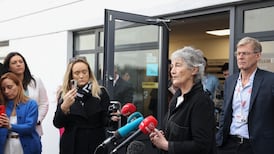Japan was once at the front in the fight against climate change. When the climate debate began heating up in the 1990s, the country was one of the lowest emitters on the planet of greenhouse gases per unit of GDP. The nation's old capital lent its name to the Kyoto Protocol, the first international treaty on emissions cuts. Tokyo has created Asia's first mandatory scheme for cutting emissions.
But Japan is falling behind and, in the words of the left-liberal Asahi newspaper, now seems "remarkably unenthusiastic" about the climate issue. The government's latest pledge to cut emissions by 26 per cent (below 2013 levels) by 2030 is well below Europe's 40 per cent target. Pushing the baseline for the cuts back to 1990, the standard year, would make the cut equivalent to just 18 per cent.
Climate Change Tracker, a nonprofit think tank, condemned that target as “inadequate”. “If all countries adopted this level of ambition, global warming would likely exceed 3-4 degrees in the 21st century,” it predicted. Far from setting a course to a low-carbon future, it added, Japan’s energy strategy, developed in conjunction with this target, increasingly depends on coal-fired power plants.
The obvious culprit for this recent turn to coal is the Fukushima nuclear disaster. The 2011 triple meltdown shattered public trust in Japan's energy strategy, forced the shutdown of Japan's entire fleet of 48 reactors and effectively terminated a plan to supply half the country's electricity with nuclear power. The existing reactors, which generated about a third of Japan's electricity needs, were key to the government's clean-energy commitments.
Fossil fuels have rushed in to fill the gap left by nuclear. Since 2012, partly driven by government incentives encouraging utilities to produce cheaper electricity, Japan has created plans for 48 new coal plants. According to the Kiko Network, a climate-focused nonprofit organisation, these plant blueprints increase at a rate of two per month.
Emissions
Not surprisingly, Japan’s emissions have soared, hitting the second highest on record in the 2014 year (the highest was in 2007). The nation’s output of carbon dioxide last year was up 10.8 per cent from 1990, according to government figures. Japan, the world’s third-largest economy, is its fifth-largest greenhouse gas emitter.
The government has used this grim development as one more reason to fire up the country’s idling reactors. The latest official energy plan, published this year, says 20-22 per cent of the nation’s electricity should come from nuclear power. The strategy has been widely criticised: the reactor fleet is ageing and experts are sceptical of their safety in a country menaced by earthquakes, volcanoes and tsunamis.
Japan could have used the 2011 disaster to push renewables, and to some extent it has. A feed-in tariff, introduced by a left-leaning government in 2012, guaranteed high rates to producers of renewable energy. The tariff triggered 1.2 million applications, mostly for solar-power installations. If all these projects went ahead, Japan could leave most of its nuclear stations switched off, say energy specialists.
But the conservative government of prime minister Shinzo Abe, which came to power in 2012, has been less accommodating to renewables. It has cut subsidies to producers and relaxed obligations on utilities to buy clean power. The utilities, meanwhile, say they are overwhelmed by the flood of small producers and have refused to accept new applications to the grid until it has settled concerns about the reliability of supply.
Germany also offered small producers guaranteed prices for 20 years, and priority access to the grid, but with different results. Clean energy is now more than a quarter of Germany's power consumption.
Japan’s plans are more modest: to increase renewables’ share of electricity output to 20 per cent by 2030. And even that requires nuclear power (after Fukushima, Germany opted to scrap its remaining reactors by 2022).
Guaranteed tariffs
Japan could have learned from Germany’s mistakes by being less generous with its guaranteed tariffs for renewables producers and by ensuring the transmission grid was modernised to prepare for their arrival. Experts such as Tom O’Sullivan, an Irish energy consultant based in Tokyo, says the ministry should have created a separate grid operator, independent of the big power utilities, which currently have little incentive to let independents on to the system.
The bottom line, says Mutsuyoshi Nishimura, Japan’s former chief climate negotiator, is that Mr Abe’s government is determined to maintain nuclear in the nation’s energy mix “at all costs”.
Meanwhile, he adds, Japan Inc is working in tandem with the government to contain the rise of renewables, because it fears their quick ascendancy will “dwarf and eventually void the pro-nuclear position”.
This is the unappealing mix Tokyo takes to the UN Framework Convention on Climate Change in Paris at the end of this year. Japan, the country that helped create the forerunner to Paris in Kyoto 18 years ago, is losing the chance to put itself back at the forefront of the fight to stop the planet from cooking.
David McNeill reports for The Irish Times from Japan












